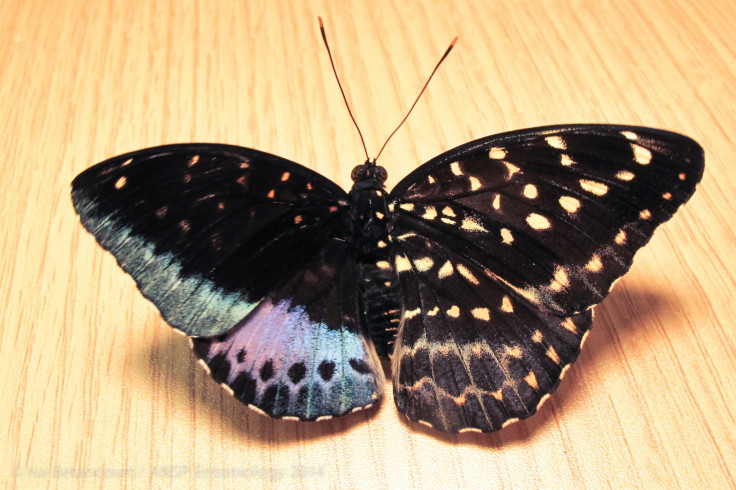Half male and half female butterfly discovered in Pennsylvania
An extremely rare butterfly that is half male and half female – being split exactly down the middle – has been discovered in Pennsylvania.
The butterfly was found by Chris Johnson, a volunteer with the Academy of Natural Sciences of Drexel University who was working on the Butterflies! exhibition.
Johnson noticed the butterfly just a few hours after it had emerged from its chrysalis. It spread its wings to show its different wing patterns.
Its right wings are brown with yellow and white spots – typically female characteristics – while its left are darker with green, blue and purple colours. The wings were also shaped differently.
"It slowly opened up, and the wings were so dramatically different, it was immediately apparent what it was," Johnson said.
"I thought: 'Somebody's fooling with me. It's just too perfect.' Then I got goose bumps."

Johnson contacted lepidopterist Jason Weintraub and they isolated the butterfly to confirm the insect - Lexias pardalis – had the condition called bilateral gynandromorphy.
"Gynandromorphism is most frequently noticed in bird and butterfly species where the two sexes have very different colouration. It can result from non-disjunction of sex chromosomes, an error that sometimes occurs during the division of chromosomes at a very early stage of development," Weintraub said.
"In most cases, such specimens are 'discovered' in museum collections by a researcher who is carefully examining reproductive organs of insects under the microscope and stumbles across a specimen with both male and female characteristics."
The butterfly had come from Penang Island in Malaysia as a pupa. It is commonly known as a brush-footed butterfly and they normally live in the tropical rainforests of Southeast Asia. It will go on display from 17 January to 16 February.
© Copyright IBTimes 2024. All rights reserved.






